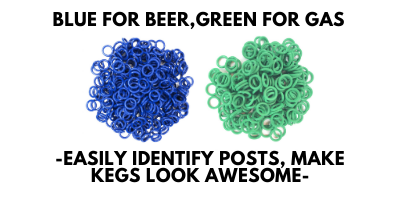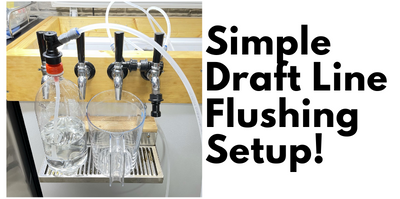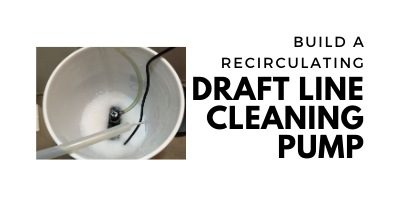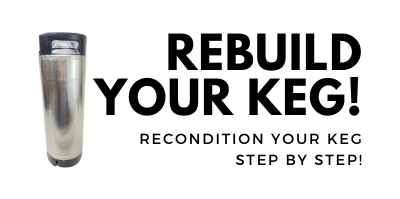
Storing Unused Homebrew Kegs
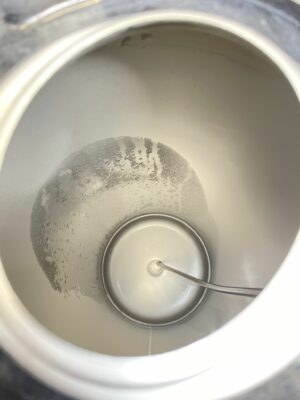
How do you store your homebrew kegs when not in use? I would say there are three ways that homebrewers typically store kegs.
- Closed and under pressure
- Closed and no pressure
- Open and no pressure
I’m going to go through each option with some pros and cons.
kegdeals
Closed/No Pressure
Take a look at the picture above. That’s an AEB keg. It was sealed in March with no pressure. Brand new and clean in my temperature controlled basement. The picture above was taken after a 7 month test. The keg remained closed and in a temperature controlled environment the entire time. As you can see a good amount of condensation formed in spite of initially appearing dry.
I’m going to say that storing a keg closed without pressure is the worst way to store kegs. There is no way to ensure that the keg is free of moisture.
Closed Under Pressure
I haven’t personally noticed condensation issues when storing a pressurized keg. My guess is that the pressure makes condensation less likely. I know this is a popular method for storing kegs with a main reason being… if it’s still under pressure when you go to use it, you can be sure it’s leak free. Some people take this a step further and sanitize before pressurizing, so the keg is “ready to go.”
This technique has some downsides in my opinion.
- This puts o-rings under un-needed constant compression. I know we want to believe keg o-rings are eternal, but they’re far from it. They get brittle and wear out – Related: How Often Should You Replace Keg O-Rings.
- I think this is a waste of CO2. Yes, it’s not a huge amount of CO2, but it’s not a trivial amount either.
- When we do this, we’re also still potentially trapping some moisture in the keg.
- As far as sanitizer goes, I don’t want to have any dampness in my empty kegs, even if it’s sanitizer. The sanitizer is going to pool at the bottom and the sides and top will be mostly dry. I would much rather keg into a freshly sanitized keg with still wet surfaces and parts. Related: Star San Tips & Tricks
Open No Pressure
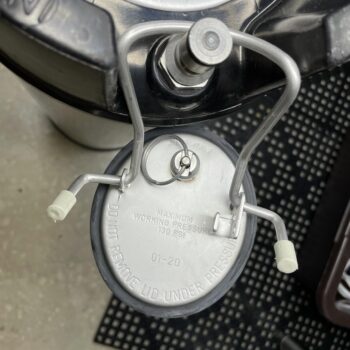 From my AEB Keg Review
From my AEB Keg Review
I’ll make the case that this is the way to go. Clean, dry with the keg lid cracked open or hanging from a post. Air can get in, no trapped moisture and no CO2 needed. A quick rinse and sanitize and the keg is good to go. For kegs stored over a longer period of time a quick PBW soak, rinse and sanitize.
Star San Tips
Build a Simple Draft Line Flushing Setup
Keg Deals!
kegdealsBuild a Recirculating Draft Line Cleaner
Rebuild Your Kegs!
Also Consider:
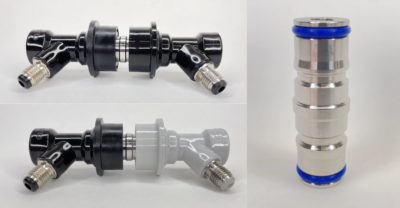 Stainless Steel Ball Lock Jumper with Food Grade Silicone O-Rings: Allows you to connect multiple ball lock runs to clean multiple lines and taps at the same time. Works with both liquid and gas QDs. Stainless Steel Ball Lock Jumper – via Valuebrew – An easy add-on… food grade o-rings, featured in our Keg Rebuild Post
Stainless Steel Ball Lock Jumper with Food Grade Silicone O-Rings: Allows you to connect multiple ball lock runs to clean multiple lines and taps at the same time. Works with both liquid and gas QDs. Stainless Steel Ball Lock Jumper – via Valuebrew – An easy add-on… food grade o-rings, featured in our Keg Rebuild Post
More Homebrew Finds!
- Last 50 Finds!
- Top Deals – a curated list of the best deals
- Homebrew Reviews – one of the largest libraries of homebrew reviews in existence!
- Our Top Posts – tips, how-tos, resources posts and more
- Let’s be Friends!
Recent Deals!
Also: Kegerator Tips & Gear | Keg Repair Part #s | Recent Keg Finds
Our Top Draft Resources!
Check our our Top Draft Related Resources- Commentary: Pin Lock Keg Pricing and Availability
- Check Your CO2 Regulator for Leaks!
- How to get a keg ready for first use? New Keg Cleaning and Prep
- Portable Draft Beer Serving Options!
- Pin Lock Keg Pricing and Availability
- The Most Difficult Spot to Check for CO2 Leaks
- Keg O-Ring Materials Selection! – EPDM, Silicone and Buna-N?
- Why Do I Have Bubbles in My Beer Line? Diagnosing and Fixing Kegerator Foam Problems
- Five Benefits of Using Corny Kegs As Fermenters
- Rebuilding & Reconditioning Homebrew Kegs!
- Food Safe Replacement Keg O-Rings in Bulk
- Hands on Review: Kegland DuoTight Fittings & EVABarrier Tubing!
- Why Won’t My Beer Carbonate? Fixing Draft Beer Carbonation Problems
- What Does a Flow Control Faucet Do?
- Upgrade Your Kegerator – 6 Improvements!
- Serve Homebrew on Any Kegerator & Convert Commercial Kegerator to Homebrew
- Tips and Gear for Growler Filling
- What’s the Difference Between Ball Lock Kegs and Pin Lock Kegs?
- Checking for Draft System CO2 Leaks – Using The Pressure Gauge Method
- Tip: Consider Oetiker Stepless Clamps for Kegerator Gas and Beer Lines
- Hands On Review: Inkbird ITC-308 Dual Stage Temperature Controller +WiFi Version
- Universal Poppets Tips and Tricks!
- Convert Your Mark II Keg & Carboy Washer to a Recirculating Draft Line Cleaning Pump!
- Step by Step: Finding and Fixing Keg CO2 Leaks
- Kegerator Temperature Probe Placement – To Immerse or Not To Immerse? – three tests to determine optimal pla…
- Kegerator Beer Line Temperatures & Reducing Foam with a Recirculating Fan
- Kegging CO2 Use Estimations and Calculations
- Balancing Your Kegerator Draft System
- Building a Simple Ball Lock Draft Line Flushing Setup
- Build a Recirculating Draft Line Cleaning Pump
- Home Brew Keg Roundup – New & Used, 5 and 2.5 Gallon & More!
- Damp Kegerator? Fix Kegerator Condensation
- Homebrew Temp Controller Roundup! – Kegerator and Fermentation – concepts, applications and models
- Bulk Keg Orings and Keg Parts Reference
This post may contain affiliate links. We may make a commission when you use our links. This will never cost you extra. Thank you for supporting Homebrew Finds!
greatdealsPrice, promotions and availability can change quickly. Check the product page for current price, description and availability.
Make sure the components you use are compatible and rated for your intended application. Contact manufacturer with questions about suitability or a specific application. Always read and follow manufacturer directions. tag:lnksfxd toppost:kegstorage tag:tpr
